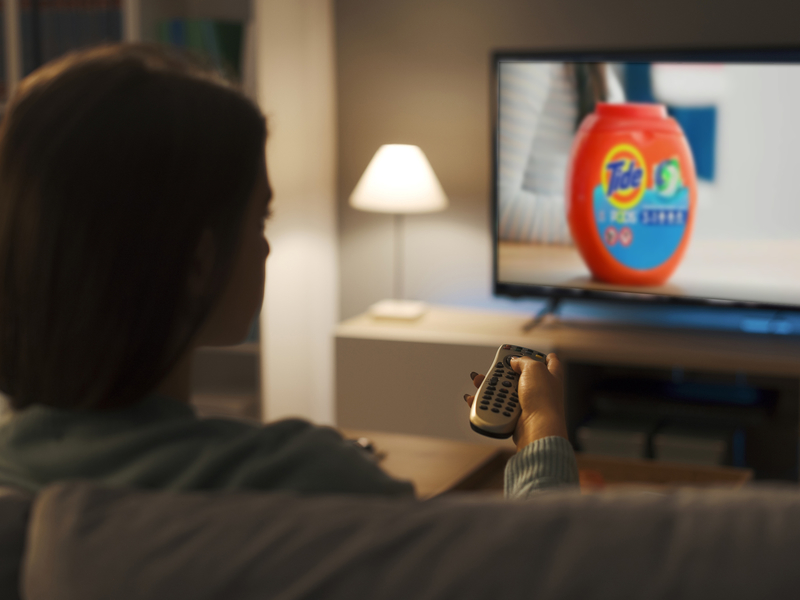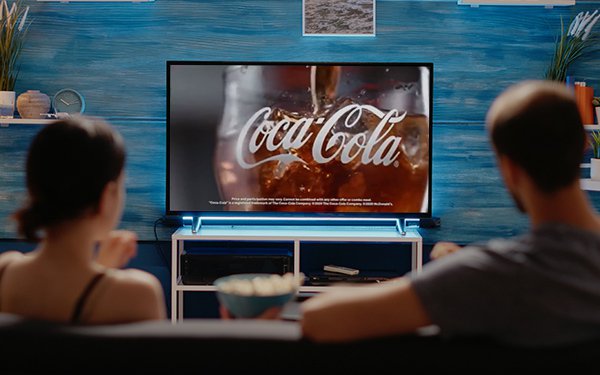While the spotlight often shines on online and social media advertising, it’s crucial not to underestimate the power and influence of TV advertising. Consider this: the average viewer in the US spends up to 5 hours a day glued to their television screens. These stats underscore the huge potential that local TV advertising holds. When it comes to learning how to advertise on local TV, the key is how effectively you employ a well-crafted strategy to harness this power.
This is where Nartak comes in. We possess the know-how to not only reach but also profoundly influence customers in a manner that leaves a lasting impact. Let’s dive into these advantages more closely and explore how you can leverage TV ads.
What Does It Mean To Advertise on Local TV?
Let’s begin by examining the essence of local TV advertising. At its core, local TV advertising sets itself apart from national campaigns by involving the placement of television commercials exclusively on local channels. This approach offers more target precision, focusing specific viewers within designated regions, whether it is a city, town, or even a specific metropolitan area.

There are plenty of benefits if you choose to advertise on local TV. To begin with, marketers can target specific customers within defined geographical areas, with generally less costs than advertising nationally. Moreover, a local TV campaign is an effective tool to fortify your brand presence and draw in loyal and engaged customers who are already ardent viewers of those channels.
For instance, advertising sports equipment on local sporting channels with passionate viewership or promoting your auto dealership on a car review program, where the viewers are likely to be interested in automotive trends or even looking for a new vehicle.
Now, the key to getting all the benefits we mentioned above is knowing how, when, and where to place your ads, which is the topic we will delve into next.
Setting Clear Advertising Goals
First and foremost, you need to know what you want to achieve. In other words, make sure to define your goals with precision. Are you looking to increase brand awareness? Drive sales? Or launch a product?
Don’t forget to delve into understanding your audience. Who are they? Consider their age, gender, interests, and all other relevant demographics. Knowing all this essential information will help shape your TV ad campaign.

Once you have laid out these critical pieces of the puzzle, you can then go on to the next step of choosing the right local TV channels to advertise your products.
Choosing the Right Local TV Channels
Choosing the proper TV channels for your ads is absolutely pivotal to the success of your campaign. After all the hard work and investment, it would be a shame to see it go to waste by not selecting the most fitting channels for your brand.

To ensure you make the right choice, allocate some time to thoroughly research and evaluate various local TV options. It is paramount to find channels and programs that align with your objectives. Consider the essential factors, such as the channel’s viewership, credibility, and reputation.
Besides choosing the right channel, You must also determine the ideal time slots for airing your ads. Know when your target audience is tuning in, and make sure your ads feature during relevant shows. By meticulously hand-picking the proper channels, programs, and time, you not only increase your chances of success but also maximize the benefits your campaign can yield.
Crafting an Effective Advertisement
The last crucial step in knowing how to advertise on local TV involves crafting a compelling advertising campaign based on your established goals.

Remember that TV advertisement wields significant power because of its ability to engage viewers through visual and auditory elements. For example, many of us have experienced having catchy tunes, memorable words, or slogans from a commercial sticking in our minds–that is precisely what we aim for. We want to create strong connections that leave a lasting impact and enable our viewers to resonate with our brand.
End Note
There is no doubt that TV advertisements are still relevant and effective in conveying messages to consumers. The benefits of local TV advertising hold the potential to propel your business to new heights. Harness the benefits to its fullest by clearly defining your goals and audience, along with placing ads strategically and crafting captivating ads.
Creating, placing, and delivering ads successfully requires dedicated effort. Consider working with a media buying agency and TV advertising professionals to help negotiate good rates, and plan and create effective TV ads, ensuring they reach the right audience and achieve the desired results.
Connect with our team at Nartak Media Group to explore how we can assist you in this exciting journey.






 Advertising during popular TV series premieres or seasonal shows can also be effective. These periods often attract dedicated viewerships, offering a consistent audience for your ads.
Advertising during popular TV series premieres or seasonal shows can also be effective. These periods often attract dedicated viewerships, offering a consistent audience for your ads. TV marketing campaigns help to boost your company’s overall credibility by exposing your brand, products, and services to a large, diverse audience. People spend time with television, and it attracts loyal viewers to things like local news, live entertainment, sports, and popular serial shows. By advertising for loyal viewers, you can create loyal customers.
TV marketing campaigns help to boost your company’s overall credibility by exposing your brand, products, and services to a large, diverse audience. People spend time with television, and it attracts loyal viewers to things like local news, live entertainment, sports, and popular serial shows. By advertising for loyal viewers, you can create loyal customers.
 Don’t Ignore Secondary Impacts
Don’t Ignore Secondary Impacts
 Optimize Based on Performance
Optimize Based on Performance
 Competitive Separation: Competitive separation is the length of time between commercials for the same service or product from a competitor. This is also known as commercial protection in broadcast and typically lasts about 10 minutes between commercials.
Competitive Separation: Competitive separation is the length of time between commercials for the same service or product from a competitor. This is also known as commercial protection in broadcast and typically lasts about 10 minutes between commercials.


